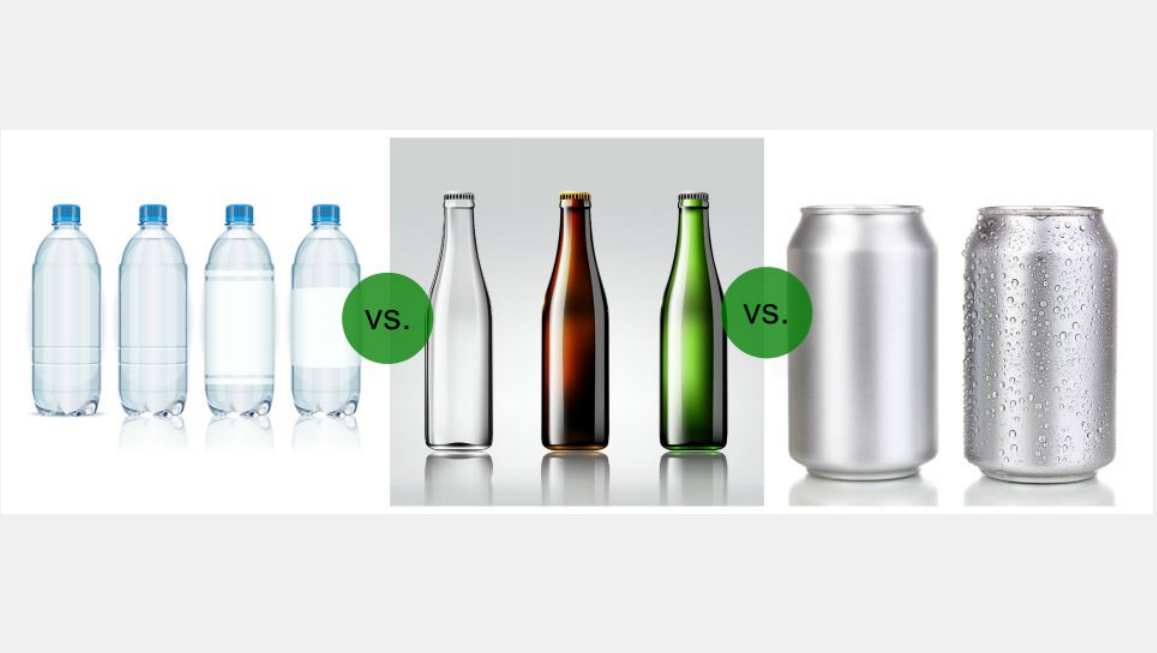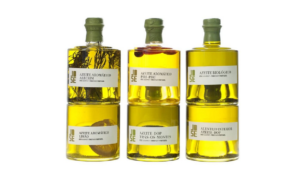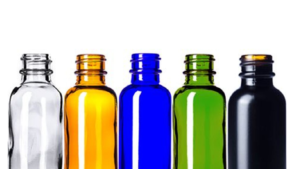Juice beverages are very popular in our daily life, for their delicious favours and nutrition. Juice are packaged in various types of solutions. Among the types of juice packaging, glass juice bottles, plastic and tin cans are the most common juice containers. What kind of beverages container do you prefer? How to choose? This is a very important issue for juice-makers.
If it takes 7 seconds to form a first impression, it takes a fraction of that for a consumer to evaluate your product among others on the shelf. A customer might not try your juice drinks and they will judge the book by the juice containers with first glance. Juice in glass bottles ia a market trend now, for glass is flexible, chemical stable, taste better and food-safe. If your juicery company interests in glass bottles for juice and requests a trusted glass bottle manufacturer, Chinese glass marker, why not get free quotes from our glass bottle factory! We produce and supply glass juice bottles in various shapes, sizes and closures, offer many brand decorating cost-effectively.
Packaging material for juice plays a large role in the beverage market. Glass and plastic containers make up the vast majority of bottles, aluminum cans also occupy great market in juice containers. In this article, we will compare the 3 types of juice packaging from different aspects to see which is the most sustainable solution.
1. How Glass vs Plastic vs Cans are Made?
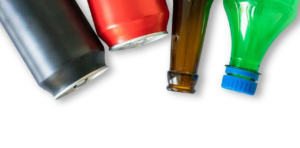
All types of juice packaging we see on the store shelves, full of beverage drinks, surface with logo printings, or label decors. How are those containers made? What are the raw material? Are the raw material healthy? Let’s list the common juice containers one by one.
Plastic
Plastic manufacturing starts off with oil and natural gas. These raw materials are converted into smaller pieces, called monomers, and are then chemically bonded together to create long chains, known as polymers. These polymers are the plastic you see in the form of water bottles, food packaging, and much more.
To get to the crude oil and natural gas needed to produce plastics, we must head for the Earth’s crust. However, oil and natural gas are buried beneath layers of bedrock — that’s where drilling comes in. Drilling for oil in our pristine oceans and fracking for natural gas is destroying our environment — and endangering our health.
Glass
Liquefied sand, soda ash (naturally occurring sodium carbonate), limestone, recycled glass, and various additives make up the glass bottles that hold our beverages.
Limestone helps prevent glass from weathering and it’s a valuable raw material for glass containers. The sedimentary rock is typically mined from a quarry — either above or below ground. In terms of the environment, limestone mining may contaminate water and contribute to noise pollution. Limestone mining can also destroy habitat for animals who live in limestone caves, and can form a permanent scar on the landscape.
It’s safe to say that the raw materials that go into making glass bottles are widely available in the nature.
Cans
New aluminum cans are almost always made from bauxite. The mining of bauxite is harsh on the planet. Miners extract raw bauxite by way of open pits — essentially, scraping a pit into the landscape and leaving environmental destruction behind. Bauxite mining contributes to habitat loss and water contamination, as well as a slew of other negative environmental impacts, like increased erosion.
2. Transportation of Glass vs Plastic vs Cans
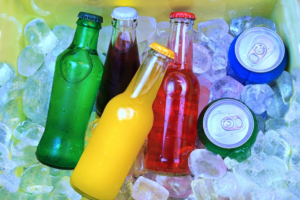
When getting from here to there, each container has a different footprint.
Plastic
The environmental cost of transporting plastic bottles can exceed even those of creating the plastic bottle in the first place. This isn’t always the case — it depends on the distance of transport — but it’s a vexing idea.
For short distances, plastic bottles have a low transportation footprint. They pack tightly — companies are definitely responding to greener consumers and are keeping sustainability in mind when designing the shapes of their bottles. They’re also very lightweight, so shipping them consumes less fuel.
Glass
There’s one big, undeniable, eco-unfriendly aspect of glass bottles — they’re heavy. The transportation of glass bottles requires significantly more energy than their lightweight counterparts. Glass is fragile, too, so shippers can’t pack glass containers into a truck as tightly as aluminum and plastic containers.
Cans
Aluminum cans are small, lightweight, and airtight. Also, aluminum cans isn’t particularly fragile, so they can be packaged tightly, requiring less cardboard packaging for transport, meaning more room for more cans.
3. Glass vs Plastic vs Cans to Environment Health
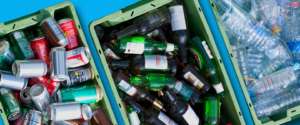
Empty — now what? Each of these containers is recyclable. Here’s how they compare.
Plastic
The recycling rate of plastics is actually quite low — in 2017, only 8.4% of plastic material generated in the U.S. was recycled. The rest was combusted for energy or sent to a landfill where its fate is uncertain — it can either find its way out and pollute our planet or sit in the landfill for up to 500 years before finally decomposing.
Glass
Glass bottles are 100% recyclable and can be recycled endlessly without loss of quality. That’s not something you can say about plastic. An estimated 80% of recovered glass containers are made into new glass bottles. Once you toss your glass bottle in the recycling bin, manufacturers can have it back on the shelves in 30 days. Plus, using recycled glass when making new glass bottles reduces the manufacturer’s carbon footprint — furnaces may run at lower temperatures when recycled glass is used because it is already melted down to the right consistency.
4. Perceived Quality Between Glass vs Plastic vs Can
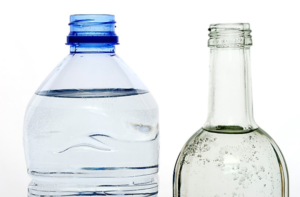
Consumers perceive a difference of quality in glass vs plastic vs cans. A study found that consumers who participated into this research believed juice drinks packaged in glass had a higher level of pleasantness than the same product stored in plastic. As it tends to be more expensive, glass offers a premium experience in look, feel and weight that can be essential for luxury fruit juices, craft cold brew or other products that want to promote a sophisticated image for marketing. Aluminum cans also show attractive look to consumers with bright colorful images. While comparing to glass packaging for juice drinks, cans seems a little cheaper.
5. Glass vs Plastic vs Can to my Health
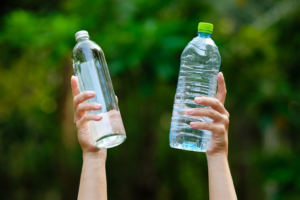
Glass is non-toxic, free from potentially harmful chemicals and generally not associated with a negative impact to your health. It is less porous than plastic. It also has a high resistance to leeching into your product even when contained for long periods of time.
The impact of aluminum cans in consumers’ health is unclear. Researchers had done many studies to test the effects of drinking from Aluminum cans. They studied adults over the age of 60 with soy milk either in a can or a glass bottle. Urine tests showed that those who drank from cans saw BPA levels up to 1,600% higher than those who drank from glass bottles. What’s more, both BPA and blood pressure rose significantly in can-drinkers within a matter of hours, noting that this is one of the first studies to illustrate the potential risks of a just one BPA exposure.
6. Who is the Winner
Comparing the basic 3 types of juice packaging, it is easy to get the best juice bottles for your beverage. If you can find aluminum cans made from 100% recycled materials, they should be your top choice when shopping for single-serving beverages. Their low transportation footprint and ease of recyclability make them a winner.
However, the extraction of raw bauxite is detrimental to the planet. New aluminum cans are not eco-friendly.
Glass should be your pick if recycled cans are not an option. Glass bottles are made from relatively innocuous raw materials and are, like aluminum cans, completely recyclable. Their weight and transportation footprint is their downfall.
Plastic does have a small carbon footprint when it comes to transportation, but it’s tough to ignore the giant carbon footprint when it comes to manufacturing. Plus, the plastic that doesn’t end up in a recycling bin can be a huge pollutant in our environment, killing wildlife and contaminating ecosystems. Our irresponsible use of plastic is ravaging the planet.
Conclusion
If you’re a beverage producer and have compared the types of juice packaging, it’s clear that glass juice bottles are the best packaging for your juice drinks. Glass juice bottles are easier to clean and reuse. You can collect your empty juice bottles from the consumers, sterilize them, and reuse them for the next batch of juice. It can cut back your packaging costs significantly. If you prefer glass packaging for your juice business, and looking for China glass bottle manufacturer, we will be your one-stop supplier.
Stocking a largest selection of glass juice bottles in different shapes, sizes for wholesales and distributors. For juice brand owners, unique bottle decorations will set your juice bottles outstand from the crowd.
Need special and bespoke glass juice bottles? We are your expert custom bottle manufacturer, designing your bottles and make production.

